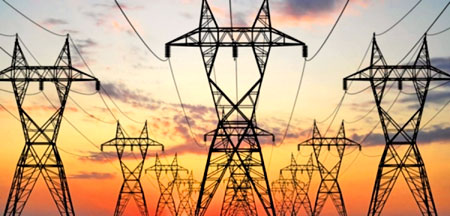|
CEB to submit long- term power generation plan shortly
by Rukshana Rizwie
With a power crisis looming, the Public Utilities Commission Sri
Lanka (PUCSL) in a strongly worded has inquired from the Ceylon
Electricity Board (CEB) the reasons for the delay in submitting the
Least Cost Long Term Generation Plan citing that CEB's delay could
aggravate an impending power crisis in the country.
 The
PUCSL noted that the CEB was asked to re-submit its Least Cost Long Term
Generation Expansion Plan 2015-2034 in December last year but the
regulator had not received the document to-date. Chairman of the PUCSL
Saliya Mathew said the commission had observed that under drought
conditions, even with the planned plant additions, there would be a
capacity shortage of energy in 2018 and 2019. He added that CEB's delay
in submitting the Long term generation plan for 2015 - 2034 will
exacerbate the situation. The
PUCSL noted that the CEB was asked to re-submit its Least Cost Long Term
Generation Expansion Plan 2015-2034 in December last year but the
regulator had not received the document to-date. Chairman of the PUCSL
Saliya Mathew said the commission had observed that under drought
conditions, even with the planned plant additions, there would be a
capacity shortage of energy in 2018 and 2019. He added that CEB's delay
in submitting the Long term generation plan for 2015 - 2034 will
exacerbate the situation.
"Considering the above circumstances, the PUCSL has decided to issue
a directive under Condition 4 of the Transmission and Bulk Supply
License issued to the CEB to submit the revised Long Term Generation
Plan including the solutions to meet the energy and capacity demand
during 2016-2021". Under this directive the CEB has been asked to submit
the long-term generation plan on or before August 1 this year.
CEB to submit LTGP in July
"We are still working on the long-term generation plan. It was
supposed to have been submitted earlier this month but at the eleventh
hour we had to postpone it, as proposals for a coal power plant had to
be shelved and withdrawn from that plan," CEB spokesperson Sulakshana
Jayewardene told the Sunday Observer.
"This prompted the CEB to go back to basics and conduct new studies
for a Liquefied Natural Gas Plant,"he added. Jayewardene explained that
policy decisions over existing or planned power plants has had an effect
on the existing plan since supply and demand forecasts were assumed on
the basis that some of these plants would be commissioned. He told the
Sunday Observer the long-term generation plan may be submitted as early
as this month.
According to the CEB's forecast, Sri Lanka's generation demand is
expected to grow at 5.5% per annum from 2015 to 2022. While this growth
rate is 3.6% under the Demand Side Management (DSM) scenario, peak
demand is expected to grow at 4.4% per annum while it is at 2.7% in the
DSM scenario.
Based on the forecast there would be a capacity shortage situation in
2019 if the demand grows as forecasted with no new plant additions or
DSM measures. In terms of the supply, the CEB forecasts that the country
will face an energy crisis since there is very low rainfall, 60%
availability of Norochcholai coal power plant and no new additions to
the National grid, even in the DSM Scenario. The PUCSL earlier this year
also wrote to the Secretary to the Ministry of Power and Energy Dr.
B.M.S Batagoda citing that based on the forecast by the PUCSL and the
low reliability of the Norochcholai Power Plant Sri Lanka will face an
energy crisis and capacity shortage in 2018 and 2019.
The PUCSL called on the CEB to expedite the National Demand Side
Management Program, Development of Planned conventional Power plants on
time and the Grid integration of the planned renewable energy based
plants.
Problem with transmission system
The Oxford Business Group(OBG) in an analysis of Sri Lanka's long-
term generation plan in a report said that the recent power failures in
February and March this year draw attention to Sri Lanka's power
generation and transmission systems.
"In both cases the system responded to an unexpected power surge, as
it was designed to, by sequentially shutting down the nation's power
infrastructure, thereby protecting power plants and transmission
facilities from permanent damage. Nevertheless, according to CEB
engineers, a key factor is rising grid instability in Sri Lanka's
generation mix.
The addition of a growing number of small-scale non-conventional
renewable energy (NCRE) facilities has made managing the nation's
electricity supply-demand balance increasingly challenging."
According to the analysis by the OBG, in 2016 the CEB was still Sri
Lanka's largest electricity player, accounting for some 66% of
generation and over 90% of transmission capacity.
However, power generation projects undertaken by private sector firms
have become increasingly prevalent. According to CEB data, at the end of
2015 there were 173 private NCRE projects up and running in Sri Lanka,
with a total generation capacity of 448 MW, up from 145 with a capacity
of 367 MW at the end of 2013. In 2010 there were 99 NCRE projects with a
capacity of 214 MW, and in 2006 just 48 projects with a capacity of 112
MW.
Demand drivers
According to the report, over the course of 2010, the country saw
real GDP growth of 8% and a corresponding increase in electricity demand
of 10%. Similarly, as real GDP growth slowed slightly in 2012, before
rising again in 2013, so too did electricity demand.
In general, a steady rise has been seen over the years in terms of
per capita electricity consumption, with the average rate at 412 KWh per
person in 2009, increasing to 519 KWh in 2013 and 534 KWh per person in
2014. Given that the Asian Development Bank forecasts GDP growth of 5.3%
in 2016 and 5.8% in 2017, the CEB is preparing for continued expansion
in electricity demand. |

